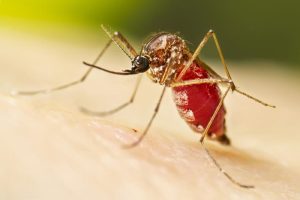NewsDesk @bactiman63
The Colombia Ministry of Health has reported 52,586 total dengue fever cases and 29 deaths through July 1.

Colombia, like other countries in the Americas, since 2022 there has been an increase in dengue cases, reaching figures in 2023 that lead to consider it at the outbreak level.
In Colombia, 29 deaths have been confirmed, leading to a lethality to date lower than that presented in previous years and outbreaks. From the above, it is important to highlight that the timely identification of cases with alarm signs allows for a comprehensive clinical approach to reduce the risk of evolution to severe forms and deaths from this cause.
The outbreak has a greater impact in terms of morbidity and lethality in the population under 19 years of age with 61.8% of the total cases nationwide, a situation that varies between territorial entities, being higher in departments such as Huila, Meta, Magdalena and Tolima, among others and 69% of confirmed deaths nationwide in this same age group.
Subscribe to Outbreak News TV on YouTube
Between epidemiological weeks 22 to 25, 51 municipalities have improved their public health situation, 30 of them going from outbreak to alarm and another 21 from alarm to control.
The behavior of dengue can be influenced by climatic variability, in the transition from the winter season due to the La Niña phenomenon to a dry season and development of the El Niño phenomenon from the second half of the year, according to what was reported by the Institute of Hydrology, Meteorology and Environmental Studies (IDEAM). This favors the maintenance of unprotected water supply by people and increases the risk of persistence of transmission due to the survival of the mosquito vector in the different transmission environments, such as homes, educational centers, areas concentration of the community and health establishments and others.
Peru dengue: Nearly 200,000 cases reported this season
This dengue outbreak behavior occurs cyclically, generally every 3 years, with 2016 and 2019 being the last periods when the country was in this circumstance, however, endemic transmission occurs in 825 municipalities, where 62 are categorized with greater transmission, given the existence of environmental and ecological conditions that favor the presence of the Aedes Aegypti mosquito and the transmission of the disease. Currently, in Colombia, 27% of municipalities at risk are in an outbreak (223 municipalities).
Argentina dengue situation: Sustained decrease in cases after peak in late March
Actions carried out by the health sector to address the dengue outbreak
- On March 31, a meeting of the National Unified Command Post was held with the Risk Management Unit and all the actors of the health system to guide preventive measures on the occasion of the beginning of Holy Week and the intensification of social mobilization to dengue control.
- For lethality control, circular 013 established dengue care as a priority process within the health service provider network.
- To date, 14,016 people have been certified in the course of Diagnosis and clinical management of dengue from the Pan American Health Organization, within the institutional quality assurance processes.
- The Ministry of Health has directed communication and educational campaigns that teach communities about the promotion and prevention of dengue at home and in schools.
- For the control of morbidity, taking into account that it is concentrated in the minor population, the Ministry has given guidelines regarding the comprehensive response and has reviewed the territorial contingency plans.
- The territorial departments are implementing mosquito control actions in educational and home environments, where 27,431 boys, girls, adolescents, and teachers from 360 municipalities, with the support of the health authorities and the Ministry of Health, developed identification and elimination actions. mosquito breeding sites and prevention actions such as washing water tanks and pools.
- On May 14, the Ministry of Health, headed by the Minister of Health, summoned the governors and mayors of the most affected territorial entities to strengthen prevention, comprehensive care, surveillance, and control of dengue.
- The Ministry of Health has promoted coordination with the Colombian Society of Public Health, the Colombian Society of Pediatrics, the Ministry of Education and some cooperation agencies such as UNICEF and PAHO to strengthen intervention actions in the territories.
- The generation of integrated vector management plans has been oriented to carry out effective control actions such as washing and brushing water tanks and the elimination of potential water accumulation sites, whether useless or for domestic use, as well as the control strict control of hatcheries in IPS, transport terminals and other establishments where there is a concentration of people.
- The National Institute of Health maintains intensified surveillance of the morbidity and lethality of cases, as well as viral circulation and the presence of the vector.
- The Ministry of Health continues with the process of training the actors of the health system, the creation of risk analysis rooms, the monitoring of alerts and the follow-up and orientation in the Territorial Health Contingency Plans.
- The National Health Superintendency carries out inspection, surveillance and control actions with emphasis on the most affected regions where difficulties have been determined for preparation and response within the framework of the National Contingency Plan; in addition to the EPS and IPS in which major alterations to the clinical care of people have been identified.
- The work of sectoral and intersectoral analysis continues to optimize the response and articulation with the Territorial Health Directorates and monitoring of risk management that must be carried out by the EPS and IPS of the country.
Colombia: Health officials urge the prevention and control of zoonotic diseases
Peru: Increase in cases of Guillain Barré syndrome declared an emergency
Argentina: Invasive Group A Streptococcus situation, Cases up in 2023


